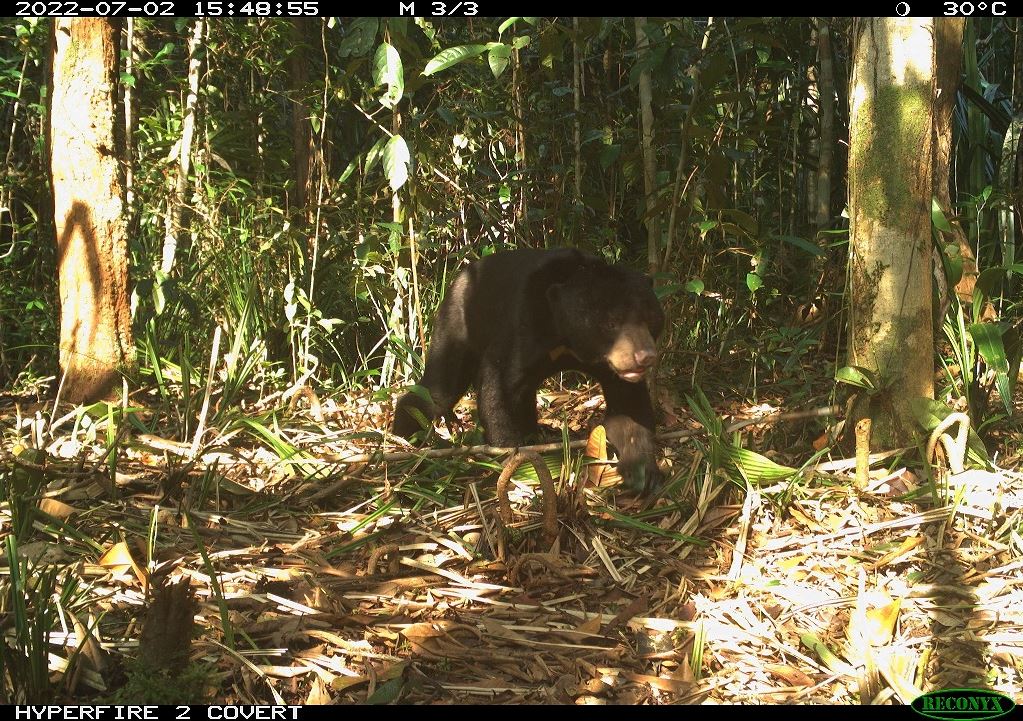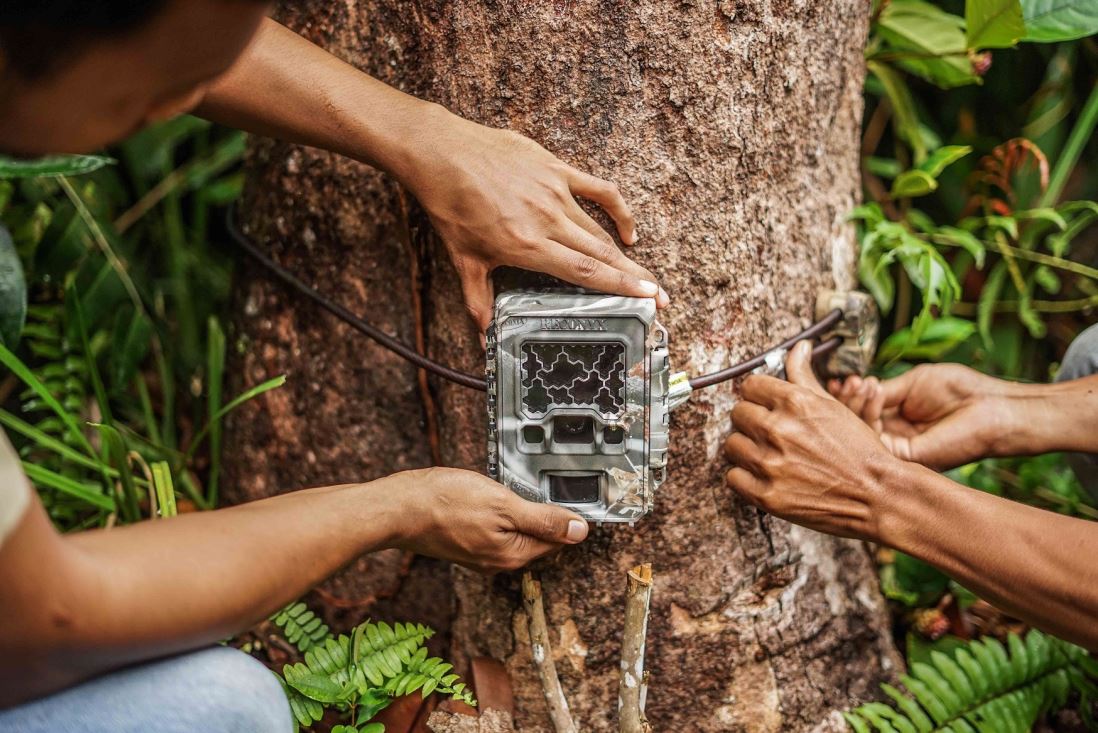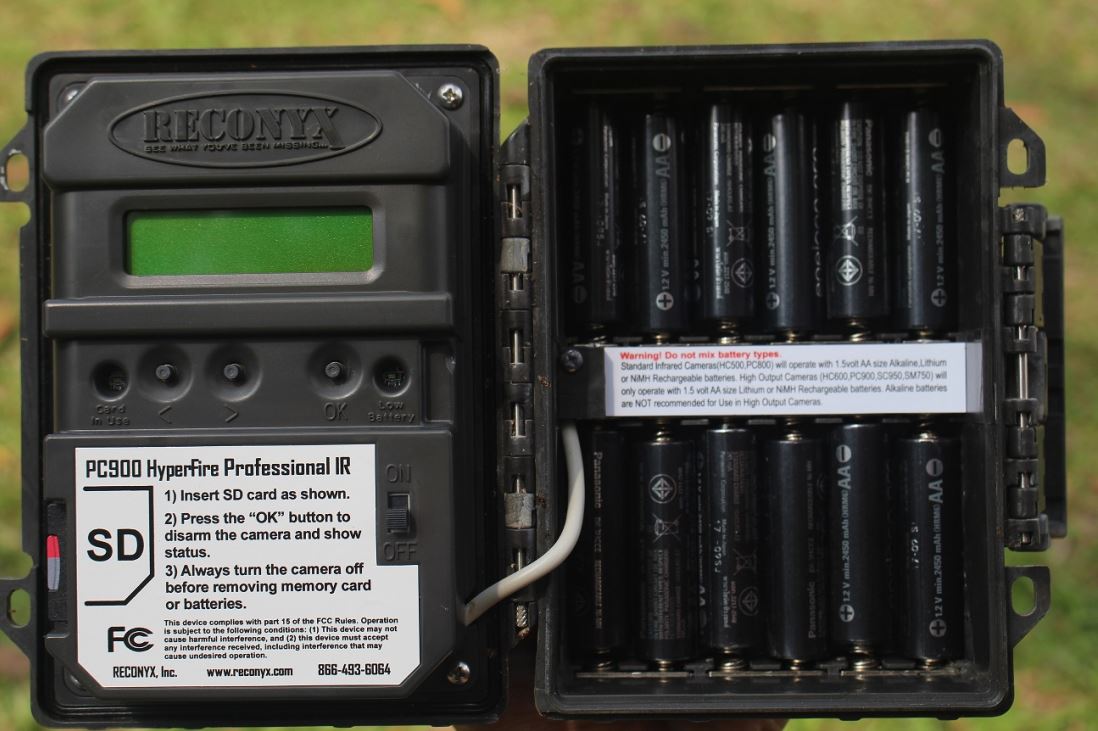August 08, 2023
Monitoring wild animals in their natural habitat can be a challenge. That’s especially true in Restorasi Ekosistem Riau (RER), where the dense foliage and remoteness of the environment gives animals plenty of places to hide. To address this issue we use camera traps to photograph and record animals, then study the images to see what they can tell us.
Camera traps play a vital role in research at RER, where they help us study a total of 846 plant and animal species. In this article, we’ll answer some of the most common questions and reveal how this technology is shedding new light on nature conservation. Join us as we venture deep into the forest, to explore the secret world of Indonesia’s wildlife. Let’s kick things off with a few key questions.
Why use camera traps?
Camera traps allow us to view animals in their natural habitat, without causing any major disturbance to them. They provide data on species presence, behavior and life stories, while also revealing how different animals interact with each other. Camera traps provide incredible insights into illusive and enigmatic species that would otherwise be too difficult to observe using conventional methods. They also allow researchers to study animals around the clock and for prolonged periods (30-60 days each time) in remote and hard-to-access locations.
What kind of animals have been photographed so far in RER?
Using camera traps, the RER team recently photographed pangolins, mouse deer, porcupine, wild pigs, sambar deer, sun bears, and many reptiles and birds.

Supported by insights from local communities, this data helps us build up a clear picture of wildlife in RER.
How do camera traps support conservation efforts?
Camera traps can provide useful information about animal diversity, behavior and habitat preferences. This provides us with an understanding of human impacts on wildlife, but also helps us make better decisions about how to protect them. Identifying the diversity of species also helps conservationists gain a better understanding of ecosystem health and can reveal new or endangered species in the region.
What are some of the other benefits they offer to wildlife?
Camera traps are considered ‘wildlife friendly’, meaning they cause little or no disturbance to animals. In the past, researchers would sometimes have to trap or directly observe animals to study them. Now, we can watch them and learn about natural behavior through camera traps, without the added stress and disruption caused by trapping and the direct presence of humans in the landscape.

Where are camera traps located?
Camera traps can be found all over RER. The key is to find locations often used by animals, such as trails and places with access to food, water, or shelter. To find the right spot, we look for signs that animals leave behind, like paw prints and droppings. It is important to assess the camera trap installation location and adjust this to match the habitat preferences of our target species.
Now you have a broad overview of the benefits offered by camera traps, let’s zoom in a little further to find out how the process works. For each camera trap project, there are three main steps that we follow:
Step 1: Setting Up
Step 2: Collecting the Cameras

Step 3: Recording the Results
In recent years, camera traps have proved to be a valuable tool in studying and observing wildlife. The results gathered by our team have revealed a wealth of biodiversity within RER and offered some fascinating insights into the natural world.
Using this technology, RER researchers have found evidence of Sumatran tigers, along with troops of macaques, wandering pangolins, and a range of other species. Recently, camera traps also photographed rare animals like the Malayan weasel and the elusive flat-headed cat – two species that were previously not known to live in the area.
Camera traps allow us to explore and study the forest without disturbing animals or disrupting their behavior. Supported by extensive data from surveys and field research, they provide us with the insights we need to monitor wildlife and keep the forest healthy.
Each fleeting glimpse of animals captured by our cameras is evidence of a functioning ecosystem; a visual reminder of why RER matters and how it helps. To read more about conservation in RER, check out this article.